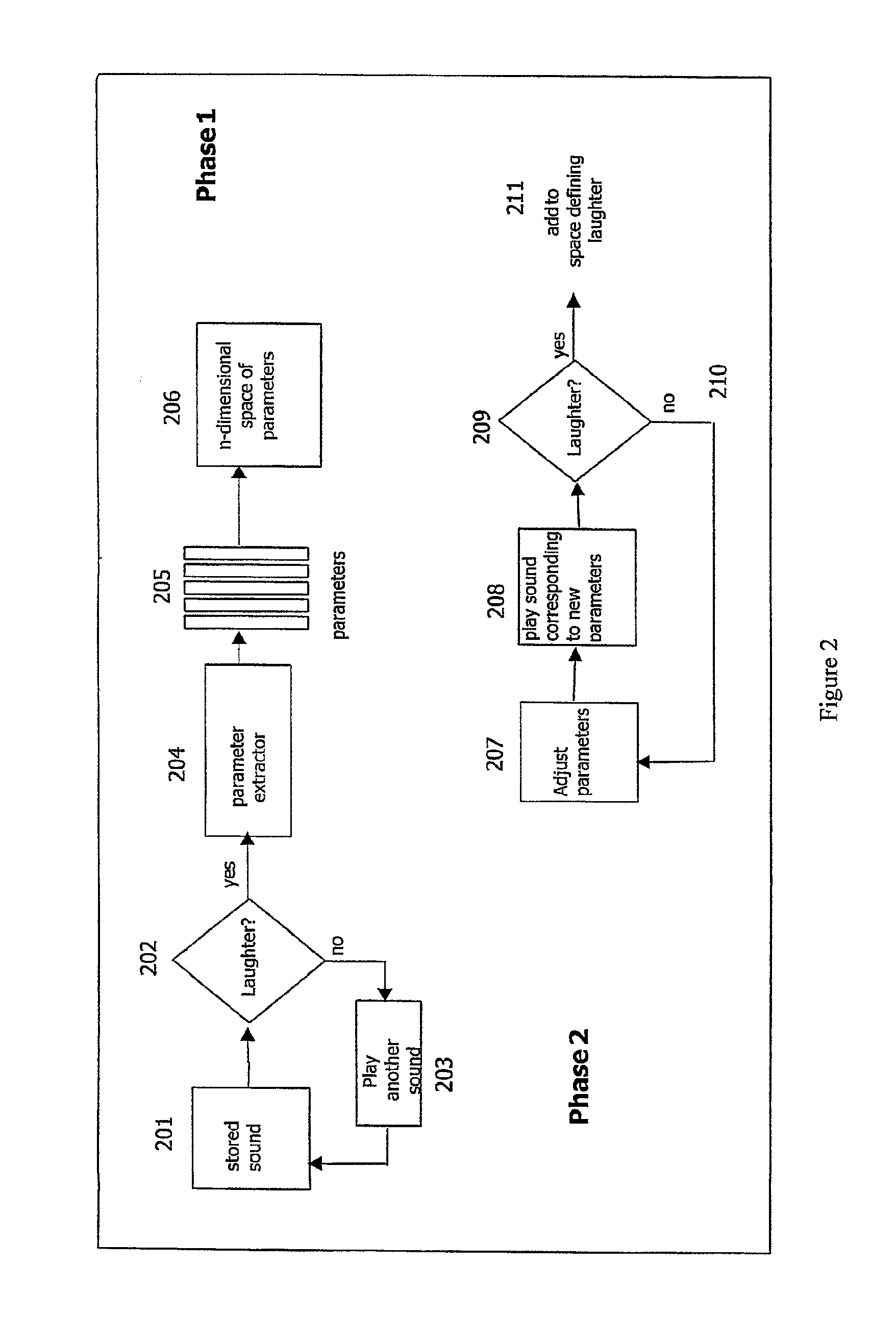Music searching methods based on human perception
a search method and human perception technology, applied in the field of music search methods based on human perception, can solve the problems of insufficient relevance of parameters to the human perception of music, the inability to adequately represent music with a binary classification system, and the inability to meaningfully describe the sound of musi
- Summary
- Abstract
- Description
- Claims
- Application Information
AI Technical Summary
Benefits of technology
Problems solved by technology
Method used
Image
Examples
Embodiment Construction
4.1 Prior Art
[0026]The prior art method of categorizing sounds, as described by Blum, is illustrated in FIG. 1. A database of stored sounds 101 is fed to a parameter extractor 102, where the sounds are decomposed using digital signal processing (DSP) techniques that are known in the art to create parameters 103 such as loudness, brightness, fundamental frequency, and cepstrum. These parameters are stored as multi-dimensional vectors in an n-dimensional space of parameters 104.
[0027]In order to find sounds that are alike, the procedure illustrated in FIG. 2 is used. In Phase 1, a human selects a sound, step 202, from a database of stored sounds 201, that falls into a category of sounds. For example, “laughter.” This is the target sound. The target sound is fed into a parameter extractor 204 to create a number of parameters 205, with a large number of data points over time for each parameter. The parameters from the sound are then stored as a vector in an n-dimensional space 206.
[0028...
PUM
 Login to View More
Login to View More Abstract
Description
Claims
Application Information
 Login to View More
Login to View More - R&D
- Intellectual Property
- Life Sciences
- Materials
- Tech Scout
- Unparalleled Data Quality
- Higher Quality Content
- 60% Fewer Hallucinations
Browse by: Latest US Patents, China's latest patents, Technical Efficacy Thesaurus, Application Domain, Technology Topic, Popular Technical Reports.
© 2025 PatSnap. All rights reserved.Legal|Privacy policy|Modern Slavery Act Transparency Statement|Sitemap|About US| Contact US: help@patsnap.com



